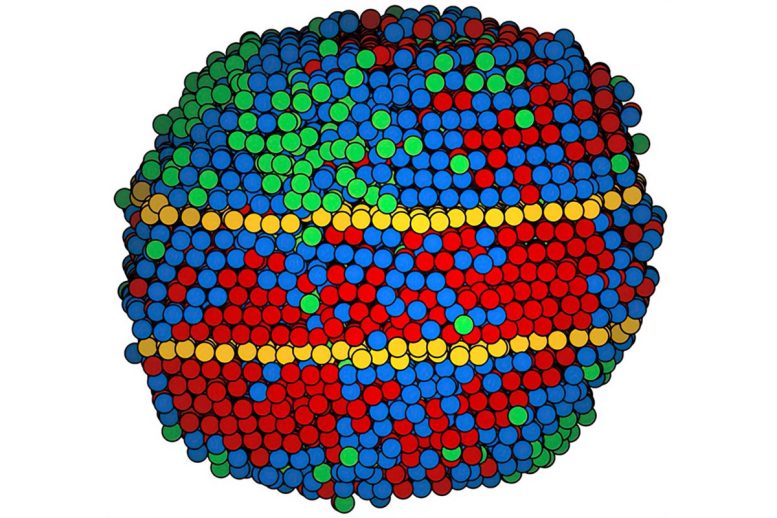
UCLA breaks new ground in alloy research, presenting the first 3D mapping of medium and high-entropy alloys, potentially revolutionizing the field with enhanced toughness and flexibility in these materials.
Alloys, which are materials such as steel that are made by combining two or more metallic elements, are among the underpinnings of contemporary life. They are essential for buildings, transportation, appliances and tools — including, very likely, the device you are using to read this story. In applying alloys, engineers have faced an age-old trade-off common in most materials: Alloys that are hard tend to be brittle and break under strain, while those that are flexible under strain tend to dent easily.
Advancements in Alloy Research
Possibilities for sidestepping that trade-off arose about 20 years ago, when researchers first developed medium- and high-entropy alloys, stable materials that combine hardness and flexibility in a way in which conventional alloys do not. (The “entropy” in the name indicates how disorderly the mixture of the elements in the alloys is.)
Now, a UCLA-led research team has provided an unprecedented view of the structure and characteristics of medium- and high-entropy alloys. Using an advanced imaging technique, the team mapped, for the first time ever, the three-dimensional atomic coordinates of such alloys. In another scientific first for any material, the researchers correlated the mixture of elements with structural defects.

“Medium- and high-entropy alloys had been previously imaged at the atomic scale in 2D projections, but this study represents the first time that their 3D atomic order has been directly observed,” said corresponding author Jianwei “John” Miao, a professor of physics in the UCLA College and member of the California NanoSystems Institute at UCLA. “We found a new knob that can be turned to boost alloys’ toughness and flexibility.”
Composition and Unique Qualities of Medium and High-Entropy Alloys
Medium-entropy alloys combine three or four metals in roughly equal amounts; high-entropy alloys combine five or more in the same way. In contrast, conventional alloys are mostly one metal with others intermixed in lower proportions. (Stainless steel, for example, can be three-quarters or more of iron.)
To understand the scientists’ findings, think of a blacksmith forging a sword. That work is guided by the counterintuitive fact that small structural defects actually make metals and alloys tougher. As the blacksmith repeatedly heats a soft, flexible metal bar until it glows and then quenches it in water, structural defects accrue that help turn the bar into an unyielding sword.
Miao and his colleagues focused on a type of structural defect called a twin boundary, which is understood to be a key factor in medium- and high-entropy alloys’ unique combination of toughness and flexibility. Twinning happens when strain causes one section of a crystal matrix to bend diagonally while the atoms around it remain in their original configuration, forming mirror images on either side of the boundary.
The Innovative Creation Process of New Alloys
The researchers used an array of metals to make nanoparticles, so small they can be measured in billionths of a meter. Six medium-entropy alloy nanoparticles combined nickel, palladium, and platinum. Four nanoparticles of a high-entropy alloy combined cobalt, nickel, ruthenium, rhodium, palladium, silver, iridium, and platinum.
The process to create these alloys resembles an extreme — and extremely fast — version of the blacksmith’s task. The scientists liquified the metal at over 2,000 degrees Fahrenheit for five-hundredths of a second, then cooled it down in less than one-tenth that time. The idea is to fix the solid alloy in the same varied mixture of elements as a liquid. Along the way, the shock of the process induced twin boundaries in six of the 10 nanoparticles; four of those each had a pair of twins.
Revolutionary Imaging Technique: Atomic Electron Tomography
Identifying the defects required an imaging technique the researchers developed, called atomic electron tomography. The technique uses electrons because atomic-level details are much smaller than wavelengths of visible light. The resulting data can be mapped in 3D because multiple images are captured as a sample is rotated. Tuning atomic electron tomography to map the complex mixtures of metals was a painstaking endeavor.
“Our goal is to find the truth in nature, and our measurements have to be as accurate as possible,” said Miao, who is also deputy director of the STROBE National Science Foundation Science and Technology Center. “We worked slowly, pushing the limit to make each step of the process as perfect as possible, then moved on to the next step.”
The scientists mapped each atom in the medium-entropy alloy nanoparticles. Some of the metals in the high-entropy alloy were too similar in size for electron microscopy to differentiate among them. So the map of those nanoparticles grouped the atoms into three categories.
Future Directions and Potential of High-Entropy Alloys
The researchers observed that the more that atoms of different elements (or different categories of elements) are mixed, the more likely the alloy’s structure will change in a way that contributes to matching toughness with flexibility. The findings could inform the design of medium- and high-entropy alloys with added durability and even unlock potential properties currently unseen in steel and other conventional alloys by engineering the mixture of certain elements.
“The problem with studying defective materials is that you have to look at each individual defect separately to really know how it affects the surrounding atoms,” said co-author Peter Ercius, a staff scientist at Lawrence Berkeley National Laboratory’s Molecular Foundry. “Atomic electron tomography is the only technique with the resolution to do that. It’s just amazing that we can see jumbled atomic arrangements at this scale inside such small objects.”
Miao and his colleagues are now developing a new imaging method that combines atomic electron microscopy with a technique for identifying a sample’s makeup based on the photons it emits, in order to distinguish between metals with atoms of similar size. They are also developing ways to examine bulk medium- and high-entropy alloys and to understand fundamental relationships between their structures and properties.
The study was published today, December 20, in the journal Nature.
Reference: “Three-dimensional atomic structure and local chemical order of medium- and high-entropy nanoalloys” by Saman Moniri, Yao Yang, Jun Ding, Yakun Yuan, Jihan Zhou, Long Yang, Fan Zhu, Yuxuan Liao, Yonggang Yao, Liangbing Hu, Peter Ercius and Jianwei Miao, 20 December 2023, Nature.
DOI: 10.1038/s41586-023-06785-z
The co-first authors of the study are Saman Moniri, a former UCLA postdoctoral scholar; Yao Yang, who earned a doctorate from UCLA in 2021; and Jun Ding of Xi’an Jiaotong University in China. Other co-authors are UCLA postdoctoral scholars Yuxuan Liao; former UCLA postdoctoral scholars Yakun Yuan, Jihan Zhou, Long Yang and Fan Zhu; and Yonggang Yao and Liangbing Hu of University of Maryland, College Park.
The study was supported by the U.S. Department of Energy. The experiment was performed at Berkeley Lab’s Molecular Foundry, also sponsored by the DOE.